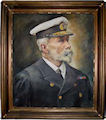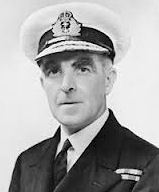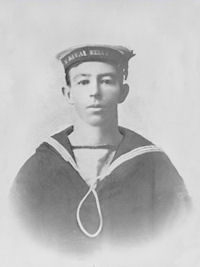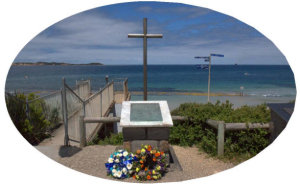
Navy Victoria
Network
Proudly supported by the Melbourne Naval Committee
Flagship Events
This page lists certain annual events that the
Navy Victoria Network management
committee have deemed to be of
significant importance to the wider Navy community.
Details of each event will be published each year when known.
Next Flagship event - click → Battle of the Coral Sea
|
Australian Navy Foundation Day - 2024 22nd Annual "CRESWELL ORATION" 
Wednesday 6 March 2024 Waverley RSL - Sunset Room
***
Click here for full details including
guest speaker and booking information.....
*** This annual event is managed by the Navy League of Australia Victoria Division on behalf of the Australian Navy Foundation Day Organising Committee (ANFDOC) which committee is formed from representatives of:
|
|
Battle of the Coral Sea
|
|
Battle of Bita Paka The Battle of Bita Paka (11 September
1914) was fought south of Kabakaul, on the island of New
Britain. This battle was a part of the invasion and
subsequent occupation of German New Guinea by the Australian
Naval and Military Expeditionary Force shortly after the
outbreak of the First World War. |
|
The Seafarers Commemorative Service
Seafarers Memorial Service - 10:30, Sunday
22nd October 2023 The Seafarers service has been held since 1907, an initiative by the Mission to Seafarers in recognition of the Battle of Trafalgar. A service to remember those Seafarers who serve or have served in the Merchant Navy and the Royal Australian Navy during World War One, World War Two, and all of the conflicts since. In particular, we remember those Seafarers who made the supreme sacrifice doing their duty, defending Australia and its trade routes. May we be worthy of their service and sacrifice. We remember our present day seafarers who are carrying out their day to day duties. Being at sea, is from time to time a dangerous occupation even without hostilities. May all Seafarers continue their important work, safely and with our sincere appreciation. During the Seafarers Service, the senior member of the Royal Australian Navy present lays a wreath in remembrance of those who have lost their life at sea. Prior to the service, Australian Naval Cadets carry in a number of Merchant Navy House Flags and members of the Royal Australian Navy carry in special flags of the Mission to Seafarers, Merchant Navy Red Ensign, Navy League of Australia and Naval Association of Australia. A Colour Party present the Australian White Ensign to the Dean. The organising committee for this service comprises representatives from the Mission to Seafarers, Company of Master Mariners and Naval Commemoration Committee of Victoria. The service is supported by the Royal Australian Navy and the Australian Navy Cadets and their support is appreciated. The Mission to Seafarers is a mission agency of the Anglican Church, which cares for the spiritual and practical welfare of all Seafarers, regardless of nationality or faith. In Victoria there are Stations in Melbourne, Geelong, Portland and Hastings. Over 21,000 Seafarers use the facilities annually, mainly for contacting their loved ones. The Mission also provides support for Seafarers in hospital, and for those with depression, as well as advocacy for those experiencing injustice. The Mission has been providing services to Seafarers for 163 years and the primary Mission building is located at 717 Flinders Street. The Melbourne Naval Committee sponsor meeting rooms at the Mission to Seafarers for Navy related organisations. |
|
HMAS Goorangai March and Service - 2023
--------------------------------
|
 The Battle of the Coral Sea, fought from
4–8 May 1942, was a major naval battle in the Pacific Theatre of World War II between the Imperial Japanese Navy
and Allied naval and air forces from the United States and
Australia.
The Battle of the Coral Sea, fought from
4–8 May 1942, was a major naval battle in the Pacific Theatre of World War II between the Imperial Japanese Navy
and Allied naval and air forces from the United States and
Australia.  in the southeastern Solomon Islands.
in the southeastern Solomon Islands.
 The U.S. learned of the Japanese plan through signals
intelligence and sent two United States Navy carrier task
forces and a joint Australian-American cruiser force, under
the overall command of American Admiral Frank J. Fletcher,
to oppose the Japanese offensive.
The U.S. learned of the Japanese plan through signals
intelligence and sent two United States Navy carrier task
forces and a joint Australian-American cruiser force, under
the overall command of American Admiral Frank J. Fletcher,
to oppose the Japanese offensive. fleet threatened British interests and its elimination was
an early priority of the British and Australian governments
during the war.
fleet threatened British interests and its elimination was
an early priority of the British and Australian governments
during the war.
 11:00 AM:
There will be no march this year.
11:00 AM:
There will be no march this year.  HMAS
Goorangai had been on operation since the 8th of November
1940 in Bass Strait following the discovery of minefields
laid in the area the month before by German Merchant
Raiders. The resultant minefields had sunk the US merchant
vessel City of Rayville, and the British steamer Cambridge
on the 7th and 8th of November.
HMAS
Goorangai had been on operation since the 8th of November
1940 in Bass Strait following the discovery of minefields
laid in the area the month before by German Merchant
Raiders. The resultant minefields had sunk the US merchant
vessel City of Rayville, and the British steamer Cambridge
on the 7th and 8th of November.